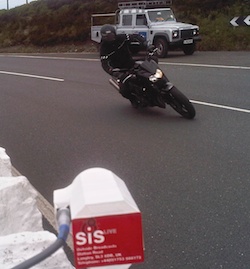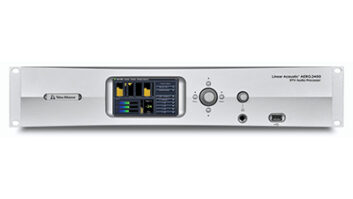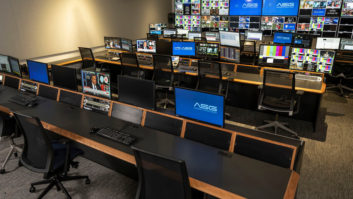
From the Sports Broadcast Europe newsletter: The 2011 Isle of Man TT motorbike racing tournament wrapped up last Friday (10th June), with technology to the fore for both the riders and television coverage, writes Kevin Hilton.
New high definition cameras were fixed to the bikes for onboard shots of the time trials and the ingest process was reorganised to get material back to the editors more quickly.
Host broadcast production for the TT is overseen by North One Television. The majority of the technical equipment, including editing facilities and special cameras, is provided by SIS Live. Arena Aviation supplied a Cineflex V14 mounted on a helicopter for aerial shots, while a Hi-Motion camera running at 600 frames per second was brought in from Arri.
New HD cameras developed by RF specialist Gigawave and adapted by SIS Live were used for the onboard shots, showing either point of view shots or the rider’s face. Paul McNeil, head of SIS Live’s special cameras department, said that with today’s racing bikes being made smaller to reduce air flow, mounting larger HD cameras can be difficult, so there is a lot of cooperation with the teams to ensure that everyone is happy.
The onboard cameras have two 32GB NanoFlash card slots, giving 64GB capacity for a two-hour race. NanoFlash technology is also used for the cameras positioned at the main stages (the stage-cam at Guthrie’s Memorial in the mountain region is pictured) and built into the road kerbs.
Because the roads are closed an hour before racing begins the stage and kerb cameras are put into record mode remotely using mobile phone commands. This means they are not running continuously, which saves on recording capacity. This year race marshals were trained to set up cameras and collect cards from key positions, so important shots could be included in the same day’s programming rather than having to wait until the following day.
XDCAM HD was used for presentation and other footage, with all material edited on Final Cut Pro machines in SIS Live’s X-trailer.
Tests were carried out this year using FLIR thermal-imaging cameras. Originally the idea was to show the tracks left on the road by the bikes but McNeil said the machines are so fast that little trace was left on the road. Instead these cameras were used in the pits and at the start line to show the temperature of the tyres and exhausts. McNeil commented that whether this is used again depends on being able to get footage into the main production chain efficiently as “a couple of renderings” had to be used for converting it into broadcast formats.
Sign up to receive TVBEurope’s Sports Broadcast Europe newsletter every fortnight.






